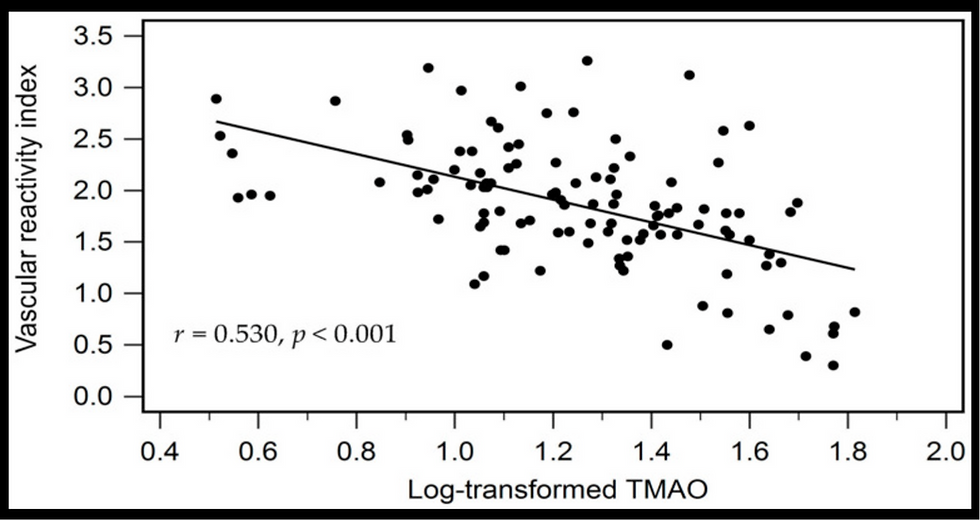Association of Microvascular Dysfunction with Depression,
- heartlung
- Jan 16, 2023
- 3 min read
and Central Role of Endothelial Dysfunction in Cardiorenal Syndrome
Cardiorenal Med. 2017 ;7(2):104-117. doi: 10.1159/000452283. Epub 2016 Dec 29. The Central Role of Endothelial Dysfunction in Cardiorenal Syndrome Zhang J1, Bottiglieri T2, McCullough PA1,3,4,5. Author information 1Baylor Heart and Vascular Institute, TX, USA.2Institute of Metabolic Disease, Baylor Research Institute, TX, USA.3Department of Internal Medicine, Baylor University Medical Center, TX, USA.4Baylor Jack and Jane Hamilton Heart and Vascular Hospital, Dallas, TX, TX, USA.5The Heart Hospital Baylor Plano, Plano, TX, USA. Abstract BACKGROUND: Endothelial dysfunction (ED) has emerged as a critical process in cardiorenal syndrome (CRS). The concept that ED is closely linked with cardiac and renal dysfunction has become an important target for CRS-related research and clinical practice. SUMMARY: The sequence of events leading to ED is initiated by type I endothelial activation (almost immediately) and type II endothelial activation (over hours, days, and even months), followed by endothelial apoptosis and endothelial necrosis. The fact that ED is a continual cellular event divides this process into reversible ED (endothelial activation) and irreversible ED (endothelial apoptosis and necrosis). This basic research-defined concept may have clinical implications. Although most antihypertensive drugs (ACE inhibitors, statins, etc.) are effective in patients with hypertension and diabetes, some of them have proved to be ineffective, which may partly be attributed to irreversible ED. Even though the etiology of ED consists mainly of asymmetric dimethylarginine, nitric oxide, oxidative stress, and anti-endothelial cell antibodies, many other inducers of ED have been identified. In addition, a distinct role of ED has been reported for each type of CRS in humans. KEY MESSAGES: Further study is warranted to prove whether ED holds promise as a pharmacological target in CRS patients. KEYWORDS: Angiotensin-converting enzyme inhibitor; Asymmetric dimethylarginine; Cardiorenal syndrome; Endothelial activation; Endothelial dysfunction; Nitric oxide; Oxidative stress; Statins; Type 1 diabetes JAMA Psychiatry. 2017 Association of Microvascular Dysfunction With Late-Life Depression: A Systematic Review and Meta-analysis. van Agtmaal MJM1, Houben AJHM1, Pouwer F2, Stehouwer CDA1, Schram MT3. Author information 1Department of Internal Medicine, Maastricht University Medical Centre, Maastricht, the Netherlands2Cardiovascular Research Institute Maastricht, Maastricht University, Maastricht, the Netherlands.2Department of Psychology, University of Southern Denmark, Odense, Denmark.3Department of Internal Medicine, Maastricht University Medical Centre, Maastricht, the Netherlands2Cardiovascular Research Institute Maastricht, Maastricht University, Maastricht, the Netherlands4Heart and Vascular Center, Maastricht University Medical Center, Maastricht, the Netherlands. Abstract IMPORTANCE: The etiologic factors of late-life depression are still poorly understood. Recent evidence suggests that microvascular dysfunction is associated with depression, which may have implications for prevention and treatment. However, this association has not been systematically reviewed. OBJECTIVE: To examine the associations of peripheral and cerebral microvascular dysfunction with late-life depression. DATA SOURCES: A systematic literature search was conducted in MEDLINE and EMBASE for and longitudinal studies published since inception to October 16, 2016, that assessed the associations between microvascular dysfunction and depression. STUDY SELECTION: Three independent researchers performed the study selection based on consensus. Inclusion criteria were a study population 40 years of age or older, a validated method of detecting depression, and validated measures of microvascular function. DATA EXTRACTION AND SYNTHESIS: This systematic review and meta-analysis has been registered at PROSPERO (CRD42016049158) and is reported in accordance with the PRISMA and MOOSE guidelines. Data extraction was performed by an independent researcher. MAIN OUTCOMES AND MEASURES: The following 5 estimates of microvascular dysfunction were considered in participants with or without depression: plasma markers of endothelial function, albuminuria, measurements of skin and muscle microcirculation, retinal arteriolar and venular diameter, and markers for cerebral small vessel disease. Data are reported as pooled odds ratios (ORs) by use of the generic inverse variance method with the use of random-effects models. RESULTS: A total of 712 studies were identified; 48 were included in the meta-analysis, of which 8 described longitudinal data. Data from 43 600 participants, 9203 individuals with depression, and 72 441 person-years (mean follow-up, 3.7 years) were available. Higher levels of plasma endothelial biomarkers (soluble intercellular adhesion molecule-1: OR, 1.58; 95% CI, 1.28-1.96), white matter hyperintensities (OR, 1.29; 95% CI, 1.19-1.39), cerebral microbleeds (OR, 1.18; 95% CI, 1.03-1.34), and cerebral (micro)infarctions (OR, 1.30; 95% CI, 1.21-1.39) were associated with depression. Among the studies available, no significant associations of albuminuria and retinal vessel diameters with depression were reported. Longitudinal data showed a significant association of white matter hyperintensities with incident depression (OR, 1.19; 95% CI, 1.09-1.30). CONCLUSIONS AND RELEVANCE: This meta-analysis shows that both the peripheral and cerebral forms of microvascular dysfunction are associated with higher odds of (incident) late-life depression. This finding may have clinical implications because microvascular dysfunction might provide a potential target for the prevention and treatment of depression. Endothelial Function Scientific Update Sponsored by Endothelix Inc. www.endothelix.com Click here to view previous updates.
![Lipoprotein(a) levels predict endothelial dysfunction in maintenance hemodialysis patients: evidence from [VENDYS] vascular reactivity index assessment](https://static.wixstatic.com/media/dac531_5285607cc591409a9d83746f042af7c6~mv2.png/v1/fill/w_980,h_980,al_c,q_90,usm_0.66_1.00_0.01,enc_avif,quality_auto/dac531_5285607cc591409a9d83746f042af7c6~mv2.png)


Comments